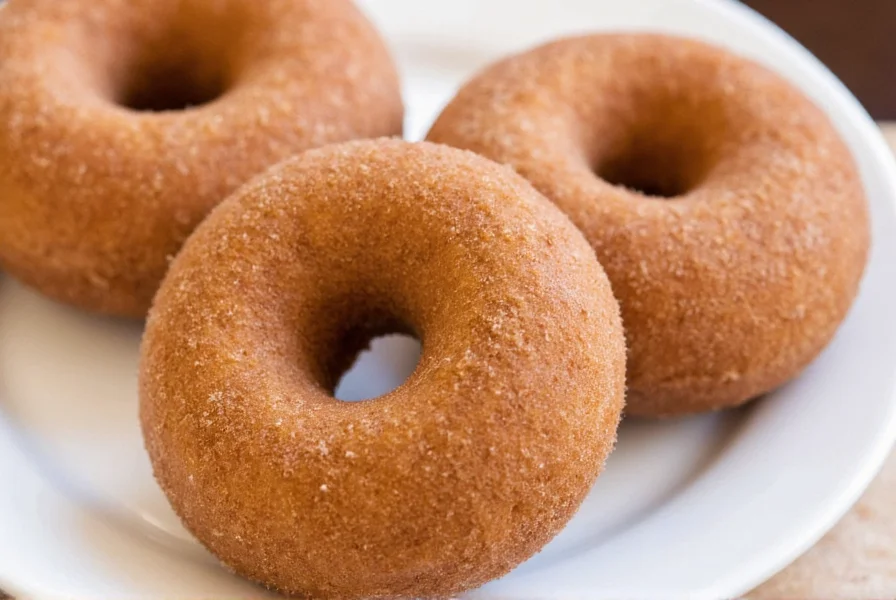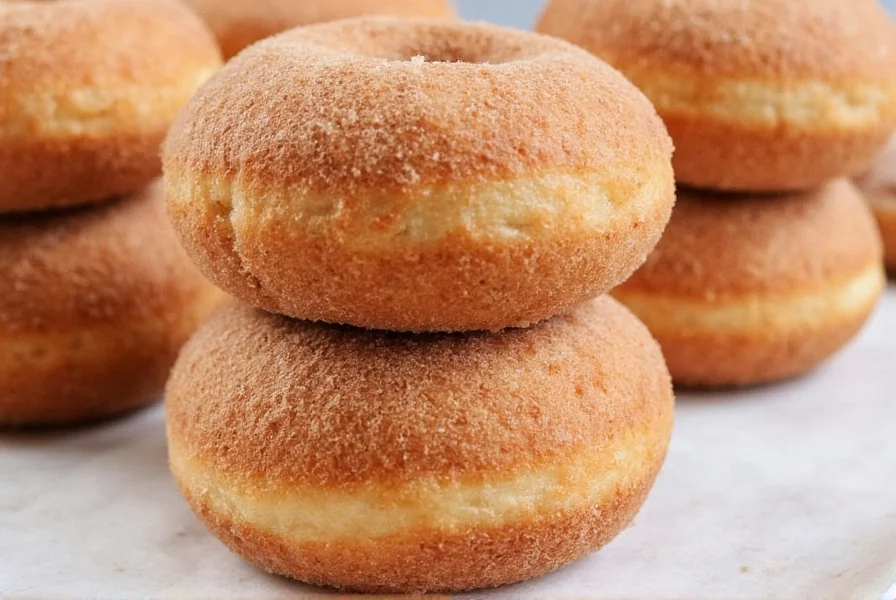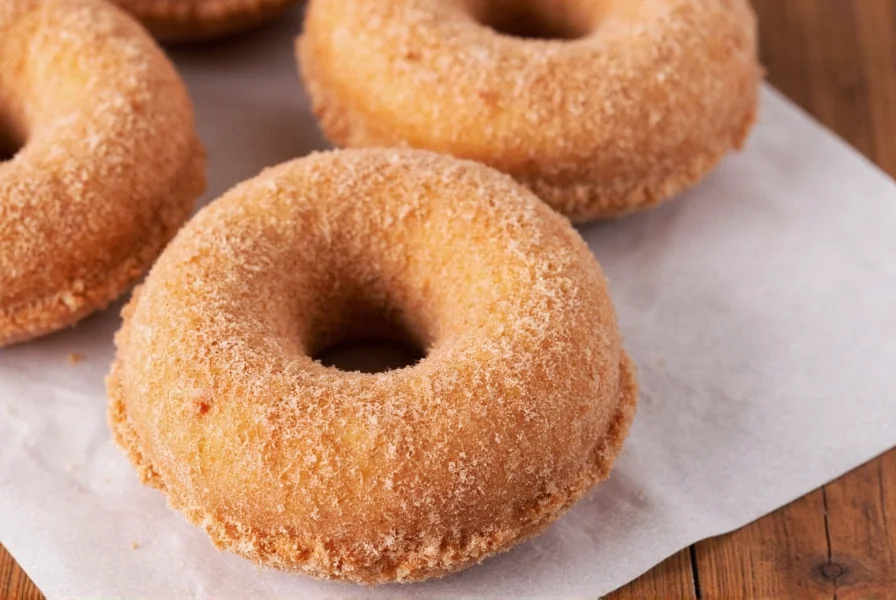There's something magical about the combination of warm, pillowy donuts rolled in fragrant cinnamon sugar. This classic treat has maintained popularity across generations for good reason—it delivers maximum flavor with minimal ingredients. Whether you're craving a weekend baking project or looking to recreate that bakery-fresh experience at home, mastering cinnamon sugar donuts is a worthwhile culinary pursuit.
The History Behind This Beloved Treat
Cinnamon sugar donuts trace their origins to Dutch settlers who brought "olykoeks" (oil cakes) to America in the 17th century. These early fried dough treats evolved through German influences, eventually becoming the ring-shaped pastries we recognize today. The cinnamon sugar variation emerged as a simpler alternative to glazed donuts, requiring no special equipment and offering immediate gratification as the sugar mixture adheres perfectly to freshly fried dough.
Yeast-Raised vs. Cake-Style: Understanding Your Options
When exploring homemade cinnamon sugar donuts, you'll encounter two primary preparation methods, each yielding distinctly different results:
| Characteristic | Yeast-Raised Donuts | Cake-Style Donuts |
|---|---|---|
| Texture | Light, airy, slightly chewy | Dense, tender crumb similar to cake |
| Preparation Time | 2-3 hours (includes rising) | 30-45 minutes (no rising) |
| Best For | Traditionalists seeking bakery authenticity | Quick weeknight treats or beginners |
| Sugar Adherence | Excellent when coated warm | Good, but may require double coating |
Essential Ingredients for Perfect Cinnamon Sugar Donuts
The beauty of cinnamon sugar donuts lies in their simplicity, but ingredient quality makes all the difference. For optimal results when making homemade cinnamon sugar donuts, pay special attention to these components:
- Flour selection: All-purpose works for cake-style, while bread flour creates superior structure in yeast-raised versions
- Fat choice: Unsalted butter provides richer flavor than shortening, but a combination yields ideal texture
- Sugar quality: Fine granulated sugar adheres better than coarse varieties for that perfect coating
- Cinnamon type: True Ceylon cinnamon offers delicate flavor, while Cassia provides the familiar bold punch

Mastering the Perfect Cinnamon Sugar Donut Recipe
Follow these professional techniques for the best cinnamon sugar donut recipe that consistently delivers bakery-quality results:
Dough Preparation Secrets
For yeast-raised varieties, maintain liquid temperatures between 105-115°F (40-46°C)—too hot kills yeast, too cold slows activation. When making cake-style donuts, sift dry ingredients three times for maximum aeration. Always chill cake donut batter for 30 minutes before shaping to prevent spreading during frying.
Frying Temperature Control
Oil temperature is non-negotiable—maintain 350-365°F (175-185°C) using a reliable candy thermometer. Lower temperatures create greasy donuts; higher temperatures cause uneven cooking. Fry in small batches to prevent temperature drops, and allow oil to fully reheat between batches for perfectly cooked cinnamon sugar donuts every time.
The Ideal Cinnamon Sugar Coating
Create your coating mixture using a 4:1 ratio of sugar to cinnamon (¼ cup sugar to 1 tablespoon cinnamon). Add the coating while donuts are still warm but not hot—approximately 2 minutes after frying. Gently shake excess oil before rolling, and use two hands to rotate donuts for even coverage. For extra flavor depth, add a pinch of nutmeg or cardamom to your sugar mixture.
Avoiding Common Cinnamon Sugar Donut Mistakes
Even experienced bakers encounter pitfalls when making easy cinnamon sugar donuts from scratch. Watch for these frequent issues:
- Soggy coating: Applying sugar to donuts that are too hot causes melting—wait for that perfect warm-but-not-hot window
- Uneven frying: Donuts sticking to pan indicates insufficient oil or incorrect temperature
- Dense texture: Overmixing cake batter or under-proofing yeast dough creates tough results
- Bland flavor: Using old spices or insufficient cinnamon diminishes that signature taste
Creative Variations for Cinnamon Sugar Donut Enthusiasts
Once you've mastered how to make perfect cinnamon sugar donuts, experiment with these professional variations:
- Buttermilk upgrade: Replace milk with buttermilk in cake recipes for enhanced tenderness
- Browned butter version: Use nutty browned butter in place of regular for complex flavor
- Spiced sugar twist: Add orange zest or a touch of espresso powder to your coating
- Stuffed surprise: Fill yeast donuts with apple butter or caramel before frying

Serving and Storage Recommendations
Cinnamon sugar donuts are best enjoyed fresh, but proper storage maintains quality. Keep in an airtight container at room temperature for up to 2 days. For longer storage, freeze uncoated donuts then reheat and coat when ready to serve. Never refrigerate, as this accelerates staling. When serving classic cinnamon sugar donuts, pair with strong coffee or cold milk to balance the sweetness.
Frequently Asked Questions
Can I bake cinnamon sugar donuts instead of frying?
Yes, you can bake cake-style cinnamon sugar donuts using a donut pan. Preheat oven to 350°F (175°C), fill pans ⅔ full, and bake 10-12 minutes. While texture differs from fried versions (less crispy exterior), baked donuts still absorb the cinnamon sugar coating well when warm. Yeast-raised donuts generally don't translate well to baking.
Why does my cinnamon sugar coating fall off?
Coating falls off when donuts are too cool before rolling or when excess oil isn't shaken off. For optimal adherence, coat donuts 2-3 minutes after frying while still warm. Use a fine-mesh sieve to remove excess oil before rolling in sugar. If coating continues falling off, try adding 1 teaspoon of cornstarch to your sugar mixture to improve adhesion.
How can I make gluten-free cinnamon sugar donuts?
For gluten-free cinnamon sugar donuts, use a quality 1:1 gluten-free flour blend with xanthan gum. Increase liquid slightly (1-2 tablespoons) as GF flours absorb more moisture. Cake-style versions work better than yeast-raised for gluten-free adaptations. Let batter rest 15 minutes before frying to allow flours to hydrate fully, preventing crumbly texture.
What's the best oil for frying cinnamon sugar donuts?
Use neutral oils with high smoke points like peanut, canola, or vegetable oil. These maintain stability at frying temperatures (350-365°F) without imparting flavor. Avoid olive oil (low smoke point) or coconut oil (distinct flavor). Maintain proper oil temperature throughout frying—use a thermometer and avoid overcrowding the pot to prevent temperature drops that cause greasy donuts.
Can I prepare cinnamon sugar donut dough ahead of time?
Yes, both dough types can be prepared in advance. Yeast-raised dough benefits from overnight refrigeration—shape donuts and let them do their final rise in the refrigerator for 8-12 hours. Cake batter can be covered and refrigerated for up to 24 hours. For best results with prepped dough, bring to proper temperature before frying (yeast dough should be room temperature; cake batter slightly cool).











 浙公网安备
33010002000092号
浙公网安备
33010002000092号 浙B2-20120091-4
浙B2-20120091-4